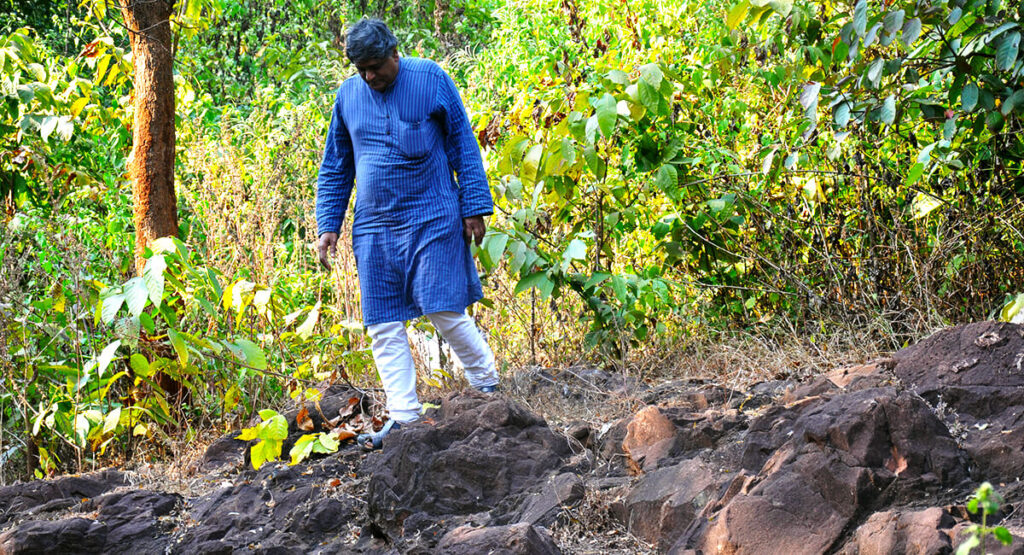Bhubaneswar : The Pillow Lava formations found in Nomira in Odisha’s Keonjhar district, one of the designated geo-heritage sites in the country, are lying neglected and unattended, according to noted historian Anil Dhir.
Nomira too is an unknown wonder, which lies in one corner of the state, which hardly anybody knows about. The Geological Survey of India, during its 125 years celebrations in 1976, had declared Nomira as a National Geological Monument.
The Tata Iron and Steel Company had even put up a marble plaque at the site but then forgotten all about it.
The Pillow Lava site was discovered by British geologists Jones and Dunne in 1942. It was the second site in the country where such formations were found, the other being near Maradihalli, a small village situated in Chitradurga District of Karnataka, Mr Dhir said.
The connection between people, landscape and the earth’s history forms the foundation of the concept of geological heritage.
The Geological Survey of India has identified 26 sites as National Geological Monuments and most of these sites are located in geologically rich states like Rajasthan, Odisha, Karnataka, Andhra, Telangana and Tamil Nadu.
In Odisha, the Pillow Lava formations found in Nomira in Keonjhar is one of such designated geo-heritage sites which has unique geological features and are embodied with significant scientific, cultural, educational or historical value, and reconnects humans to the remarkable planet we call home.
Mr Dhir said in many countries, the concept of geo-heritage and geo-parks has found much traction with sites being properly protected as part of larger bio-diverse.
Geo-tourism,he said, is an integral part of these geo-parks which encompasses both landforms like outcrops and rock types and geological processes, such as volcanism or glaciations.
Unfortunately, in India, beyond declaring these sites as geological monuments, little else has been done to protect these marvels of nature.
Most of the sites are lying forlorn and desolate and may well be lost to the country during the course of ‘development’, Mr Dhir said.
Nomira is located about 18 km south of Joda town, on the Barbil-Lahunipara state highway. The monument can be approached from Joda by following the Joda-Nayagarh road up to Bamebari village and then trekking 2 kms eastward to Nomira.
The historian said the pillow lava outcrops look like small buns or pillows, a feature formed when hot molten basaltic magma slowly erupted under water and solidified rapidly to form roughly spherical or rounded pillow-shapes.
This happened 2.8 billion years ago, when the area was covered by oceans and provides an important clue to the evolution of Precambrian peninsular India.
The well-preserved pillow structures are roughly ellipsoidal and closely packed. Because of its remote location, nestled in an unapproachable area which was thick jungle till a few decades ago, Nomira is one of the best-preserved pillow lava sites of the world, Mr Dhir claimed.
Such pillow basalts can be seen forming even today along the mid-oceanic ridges or where submarine volcanoes erupt in the ocean, he said.
It is happening in the Hawaiian volcano eruption recently. The flowing lava, when it reaches the sea, gets chilled so fast that part of the flow separates into discrete rounded bodies a few feet or less in size.
Mr Dhir who recently visited the site with the help of GPS tracking said it is now heavily wooded with shrubs and small trees. Nobody knew of the place and the plaque that had been put up nearly 45 years ago was found with a lot of difficulties.
The site, Mr Dhir said, now adjoins the railway line, and any expansion will spell the doom of this natural heritage.
With hectic mining and blasting going on in the vicinity, both legal and illegal, Nomira needs to be protected. It is indeed a pity that the government is not aware of this geological wonder, he said, adding that there are at least two dozen unique geological sites in Odisha, which should be declared as National Geological Monuments.











More Stories
Low vision clinic inaugurated at AIIMS Bhubaneswar
Urban education programme comes in handy for Odisha’s tribal, dalit kids
Now country ‘aatank’ struggling for ‘aata’: PM